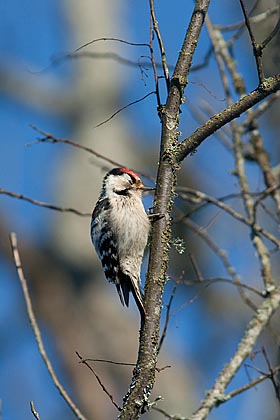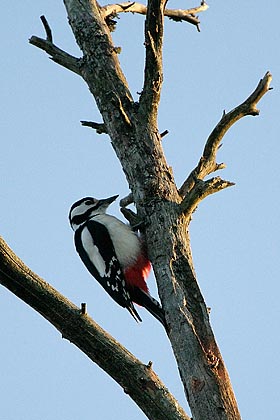Woodpeckers have been seen frequently since late summer
Photos: Kaarel Kaisel and Arne Ader
Translation:SilverT
Lesser spotted woodpecker
Lesser spotted woodpecker
Väike-kirjurähn Dendrocopos minor
Great spotted woodpecker
Suur-kirjurähn Dendrocopos major
After nesting, lesser spotted woodpeckers can often be seen together with groups of tits. They have modest behaviour and are only slightly bigger than sparrows.
Lesser spotted woodpecker looks like a tiny clone of the great spotted woodpecker. They have similar plumage with the only difference being the pink colour under the tail and the top feathers on wings have black and white stripes. Male lesser spotted woodpecker has a red crown, while the great spotted woodpecker only has a small red spot at the back of its head. Female birds do not have such decorations, however, young great spotted woodpeckers have red feathers on their crowns. It is good to have a binocular for observations.
Both species love broadleaved and mixed forests, parks, cemeteries, and the gardens of smaller settlements and country homes.
Our most common, great spotted woodpecker`s numbers are estimated to be around a few hundred thousand individuals; lesser spotted woodpecker is represented in numbers which are about twenty times smaller. Both species of spotted woodpeckers stay here throughout the year.
Lesser spotted woodpecker observations: LINK
Great spotted woodpecker observations: LINK
Great spotted woodpecker
White-backed woodpecker
Valgeselg-kirjurähn Dendrocopos leucotos
When the great spotted woodpecker was given its name, it probably was not known that actually our biggest woodpecker is the white-backed woodpecker. Or perhaps the biggest one had not reached us yet.
The numbers of white-backed woodpeckers have been growing year by year and there are about five thousand pairs of breeders here. They prefer moist mixed forests. It is still a rare sight to see these birds on our islands, but life goes on.
White-backed woodpecker observations: LINK










